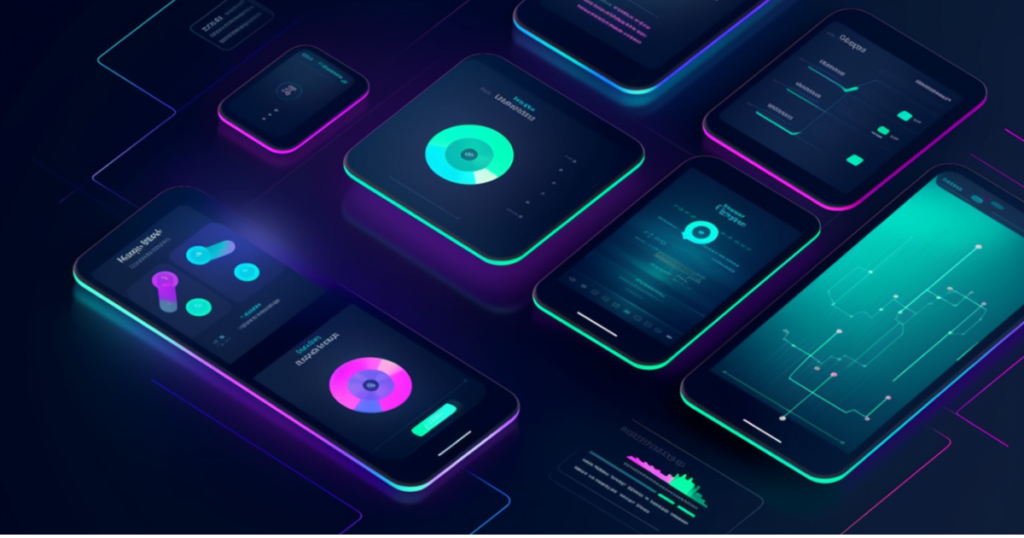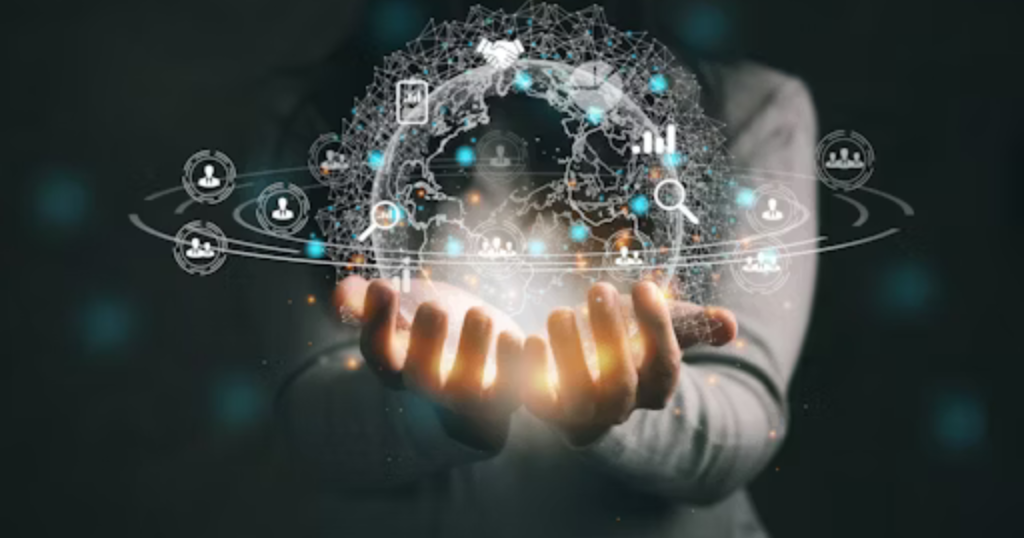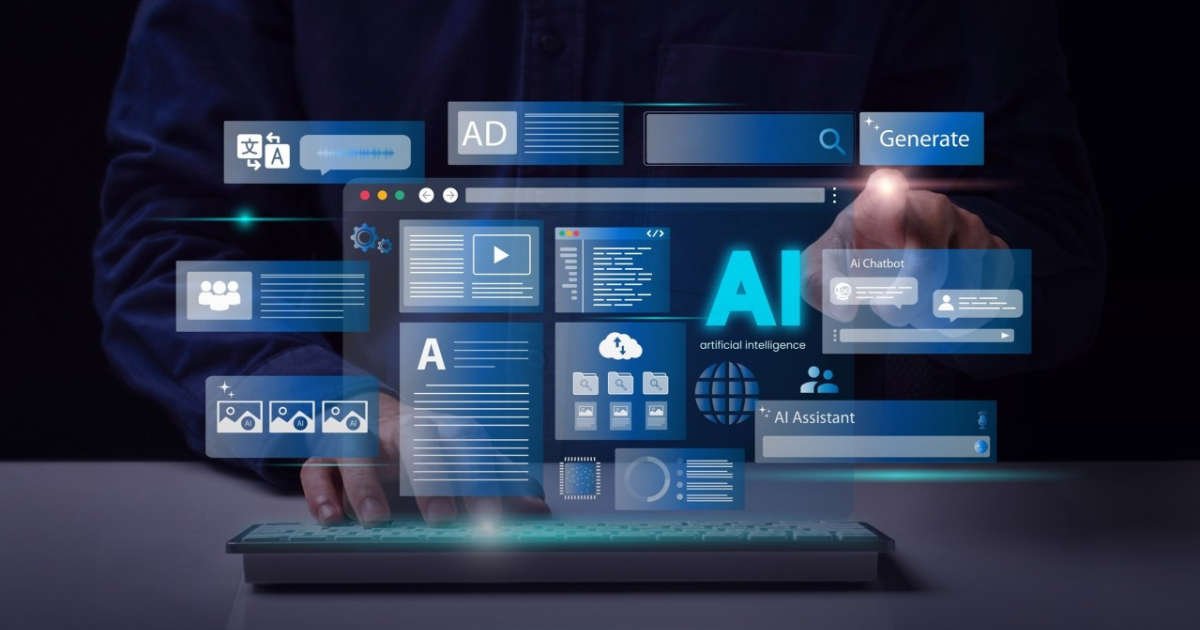The field of AI Powered Web Design has undergone a significant transformation with the introduction of Artificial Intelligence (AI). AI-powered web design is revolutionizing how websites are created, optimized, and personalized. With automation, machine learning, and intelligent algorithms, AI can design websites with minimal human intervention while improving efficiency, user experience, and performance.
In this article, we’ll explore what AI-powered web design is, how it works, and why it is shaping the future of web development.
What Is AI Powered Web Design?
AI-powered web design refers to the use of artificial intelligence, machine learning, and automation tools to create, enhance, and optimize websites. Unlike traditional web design, which relies on human designers and developers, AI-driven platforms use data analysis, predictive modeling, and automation to streamline the process.
Key Features of AI-Powered Web Design
- Automated Website Creation – AI tools can generate website layouts, designs, and structures in minutes.
- Personalized User Experience – AI customizes content and design based on user behavior and preferences.
- Smart Content Generation – AI suggests or creates text, images, and videos tailored to user needs.
- SEO Optimization – AI improves search engine rankings by analyzing trends and optimizing content.
- Responsive and Adaptive Design – AI ensures that websites adjust seamlessly across devices and screen sizes.
How Does AI-Powered Web Design Work?
1. AI-Driven Website Builders
AI-powered website builders like Wix ADI, Bookmark, and Zyro analyze user inputs and preferences to generate fully functional websites. These platforms automate everything from layout selection to color schemes and typography, reducing the need for manual coding.
2. Machine Learning Algorithms for Design Optimization
AI uses machine learning to analyze user interactions, such as:
- Heatmaps to track visitor behavior
- A/B testing results to refine UI/UX
- Click-through rates to enhance navigation and CTA placement
3. AI in UX and UI Design

AI tools like Adobe Sensei and Uizard optimize user interface (UI) and user experience (UX) by analyzing design trends and user engagement patterns. These tools suggest the best color combinations, fonts, and layouts for improved usability.
4. Automated Content Generation
AI-powered platforms such as ChatGPT, Jasper, and Copy.ai assist in creating:
- Blog posts and product descriptions
- SEO-friendly headlines and meta descriptions
- Personalized chatbot responses
5. AI for SEO and Performance Optimization
AI tools like SurferSEO, Clearscope, and RankIQ analyze search engine trends and recommend:
- Keyword strategies
- Content improvements
- Link-building opportunities
Additionally, AI-powered CDNs (Content Delivery Networks) optimize website speed by caching content and reducing latency.
6. Voice and Visual Search Optimization
With the rise of voice assistants like Alexa and Google Assistant, AI is helping websites become voice-search-friendly by improving natural language processing (NLP). AI also enables visual search capabilities, allowing users to search using images instead of text.
Benefits of AI-Powered Web Design
1. Faster Website Development
AI significantly reduces development time by automating coding, design, and content generation.
2. Enhanced User Experience
AI personalizes user interactions by analyzing behavior and preferences, leading to higher engagement and conversions.
3. Cost-Effective Solutions
Businesses can save on web design and development costs by using AI-driven platforms that require minimal human intervention.
4. Improved SEO and Content Strategy
AI-driven tools continuously analyze website performance and suggest improvements for better search rankings.
5. Data-Driven Design Decisions
AI helps designers make informed choices based on real-time user data instead of relying on guesswork.
6. Scalability and Future-Proofing

AI-powered websites are adaptable and can scale easily with business growth and technological advancements.
Challenges of AI-Powered Web Design
1. Lack of Human Creativity
While AI can automate design, it may struggle to capture human emotions, intuition, and artistic creativity.
2. Limited Customization
AI-generated designs may not offer the same level of customization as those created by professional designers.
3. Security and Privacy Concerns
AI-powered tools collect large amounts of data, raising concerns about security and user privacy.
4. Dependence on AI Algorithms
AI models require constant updates and refinements to stay relevant, which can be challenging for businesses without technical expertise.
Future Trends in AI-Powered Web Design
1. AI-Generated Code and No-Code Development
No-code and low-code platforms like Webflow and Bubble will continue to integrate AI to allow users to create complex websites without programming knowledge.
2. AI-Powered Chatbots and Virtual Assistants
Advanced AI chatbots will provide real-time customer support, improving user engagement and satisfaction.
3. Hyper-Personalization with AI
AI will analyze individual user behavior to create dynamic, personalized experiences on websites, leading to higher conversion rates.
4. Voice and Visual AI in Web Design
AI will further integrate voice and visual recognition, enabling websites to offer hands-free and immersive navigation experiences.
5. AI and AR/VR Integration
AI-driven Augmented Reality (AR) and Virtual Reality (VR) experiences will revolutionize e-commerce, real estate, and education websites.
Also Read: What Is Headless CMS Development And Why Is It The Future Of Content Management?
Conclusion
AI-powered web design is transforming the way websites are built, optimized, and maintained. By leveraging AI-driven automation, machine learning, and data analysis, businesses can create fast, user-friendly, and SEO-optimized websites with minimal effort. While AI cannot fully replace human designers, it is a powerful tool that enhances efficiency, personalization, and scalability in web design. As AI continues to evolve, it will play a significant role in shaping the future of digital experiences.
FAQs
1. What is AI-powered web design?
AI-powered web design uses artificial intelligence and machine learning to automate website creation, design, content generation, and optimization.
2. Can AI replace human web designers?
AI can assist and enhance web design, but human creativity, intuition, and branding expertise are still essential for unique and compelling designs.
3. What are the best AI tools for web design?
Popular AI tools for web design include Wix ADI, Adobe Sensei, Uizard, Zyro, and Bookmark AI.
4. How does AI improve website SEO?
AI analyzes search trends, optimizes content for keywords, enhances user experience, and suggests strategies for better search engine rankings.
5. Is AI-powered web design suitable for all businesses?
Yes! AI-powered web design is beneficial for small businesses, startups, enterprises, and e-commerce platforms looking for scalable and cost-effective solutions.

